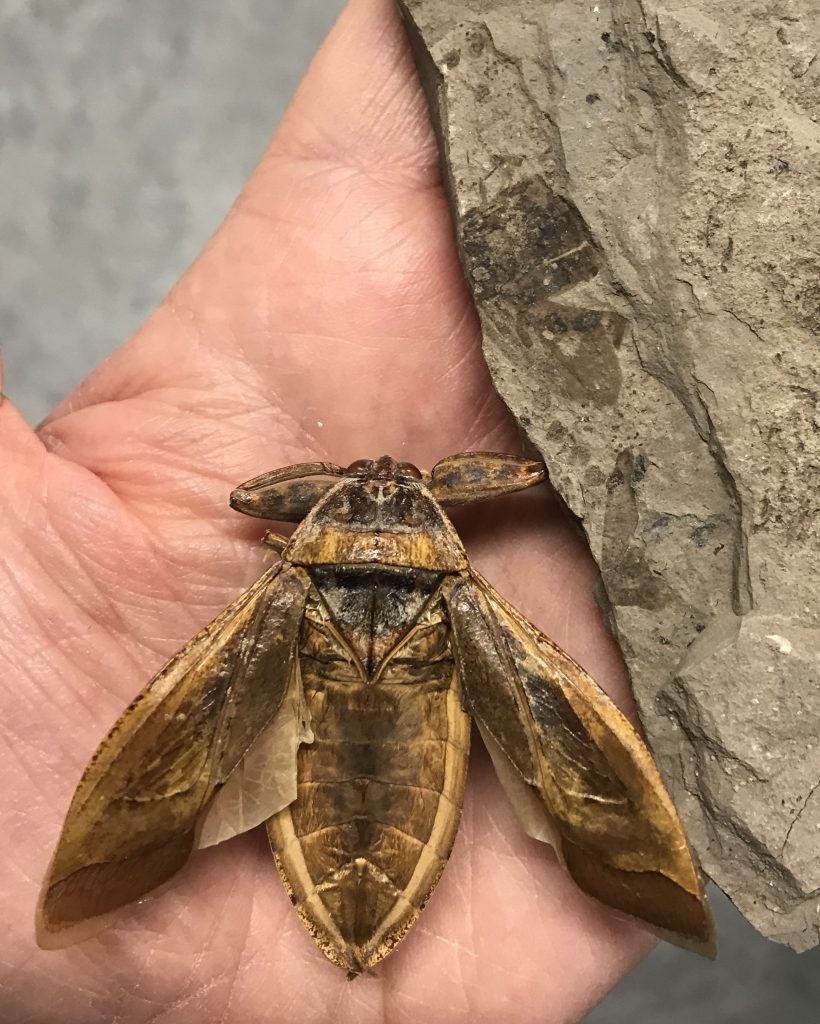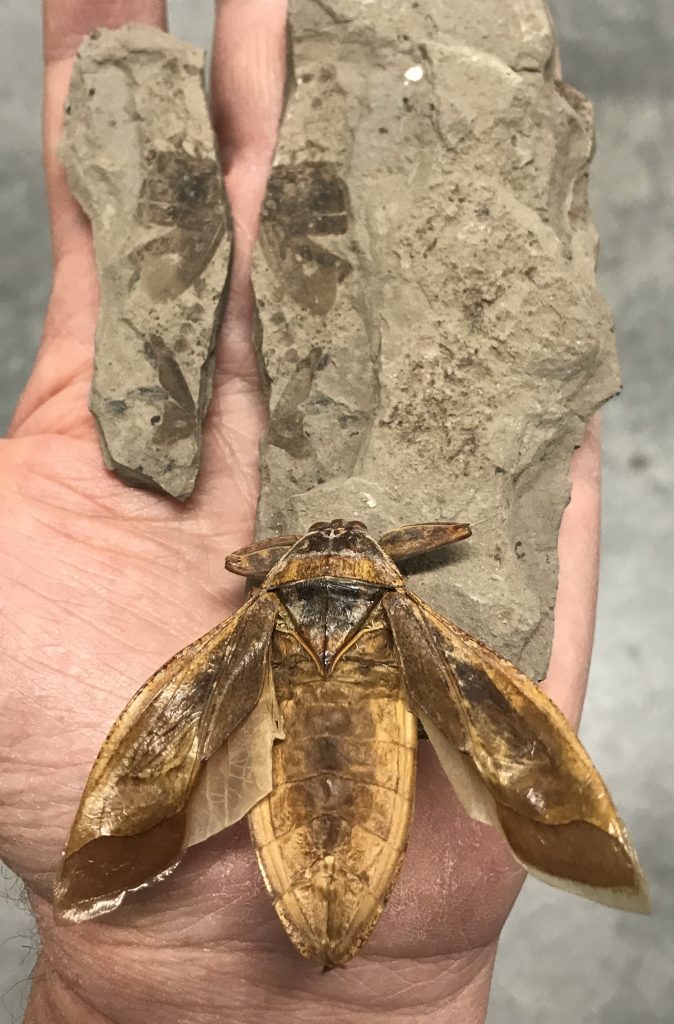Famous dinosaur-producing rocks in Utah yield fossil of large predatory insect

VERNAL, UTAH — A team of paleontologists from Utah and Argentina has discovered a 151-million-year-old insect fossil from the Morrison Formation, the same rock unit from the Rocky Mountain region that has produced the famous dinosaurs Apatosaurus, Allosaurus, and Stegosaurus.
The insect was named Morrisonnepa jurassica in a recent paper in the journal Historical Biology. Perhaps appropriately for a geological layer that for so long has revealed large carnivores of the reptilian variety, the new fossil insect appears to be a relatively large predator whose modern relatives are known to attack and eat not just other invertebrates like snails and crustaceans but also vertebrate prey such as fish, amphibians, and snakes.
As demonstrated in the new paper, Morrisonnepa was a member of the hemipteran insect group Nepomorpha (“true water bugs”) and appears to be related to the modern family Belostomatidae, the latter also known as “giant water bugs”. Modern forms have a large stinging proboscis near the mouth with which they attack prey, and although they can fly, they spend a fair amount of time hunting underwater in ponds and streams. Their bite is reported to be extremely painful even in humans.
Morrisonnepa was found in November 2017, at a locality in the Late Jurassic-age Morrison Formation in southeastern Utah that has otherwise yielded an abundance of plant fossils such as ferns and ginkgoes. The insect fossil consists of most of the abdomen, two elements of the forewing, and possibly the head and is only the second insect body fossil ever discovered from the Morrison Formation.
The first insect body fossil from the unit consists of an isolated wing of a relative of crickets and grasshoppers from Colorado and was just described in 2011. So, after more than 140 years of dinosaur finds in the Morrison Formation the insect body fossil record is just now coming to light.

Paleoentomologist María Belén Lara of the Centro de Ecología Aplicada del Litoral in Argentina, lead author on the study, explained that other than some deposits from the Age of Mammals.
“Most of the information on fossil insects in the United States comes from Carboniferous, Permian (Paleozoic Era), and Triassic (Mesozoic) strata,” Belén said. “Therefore, this finding is of utmost importance for the country. Also, with this discovery, we can support that the true aquatic bugs of the Jurassic were morphologically similar to their modern counterparts.”
Paleontologist James Kirkland of the Utah Geological Survey in Salt Lake City, a co-author on the paper, described the Late Jurassic setting that preserved the insect fossil as an oxbow pond.
“The plant debris beds and conglomerate beds below it suggests that when the nearby rivers were in flood, the pond served as a catchment for all sorts of things,” Kirkland said. “Among that debris were many leaves and the rare insect.”
Paleontologist John Foster of the Utah Field House of Natural History State Park Museum in Vernal, Utah, another co-author on the study, explained that because body fossil evidence of the insect fauna of the Late Jurassic in North America has been so lacking, paleontologists have until recently had to rely entirely on possible traces that the animals made in the sediments laid down at the time. That indirect evidence can be limiting.
“We always dreamed of finding actual insect fossils in the Morrison, but until the first report in 2011 there had been nothing,” Foster said. “That report gave us hope, but still, when this specimen appeared under a microscope, mixed in with a bulk batch of unidentified plant fossil material, it was shocking to realize that we were looking at an insect abdomen and wing – and big ones.”
That shock led to excitement when the insect turned out to be nothing for which there had been trace fossil evidence previously in the Morrison Formation; instead, it was a relatively large semi-aquatic predator that hunted even vertebrate prey in the water bodies of the time.
Kirkland added that the modern giant water bugs’ reputations as fierce predators are not exaggerated.
“I picked one up when I was out fishing once,” Kirkland said. “An impressive two-inch bug, but if it lays into you with that proboscis, you’ll drop it fast.”
The locality was just discovered in 2016 during a Utah Geological Survey paleontological resource inventory of public lands in southeastern Utah, funded and permitted by the Bureau of Land Management. The large insect fossil is now in the paleontology collections at the Utah Field House of Natural History State Park Museum in Vernal, Utah, and the team plans to return to the site soon to try to find more insect specimens.
“There are plenty of good plant fossils at this site, so if we luck out and can find more insects too, it’ll be the icing on the cake, as they say,” Foster said.
If you found this blog entry interesting, please consider sharing it through your social network.